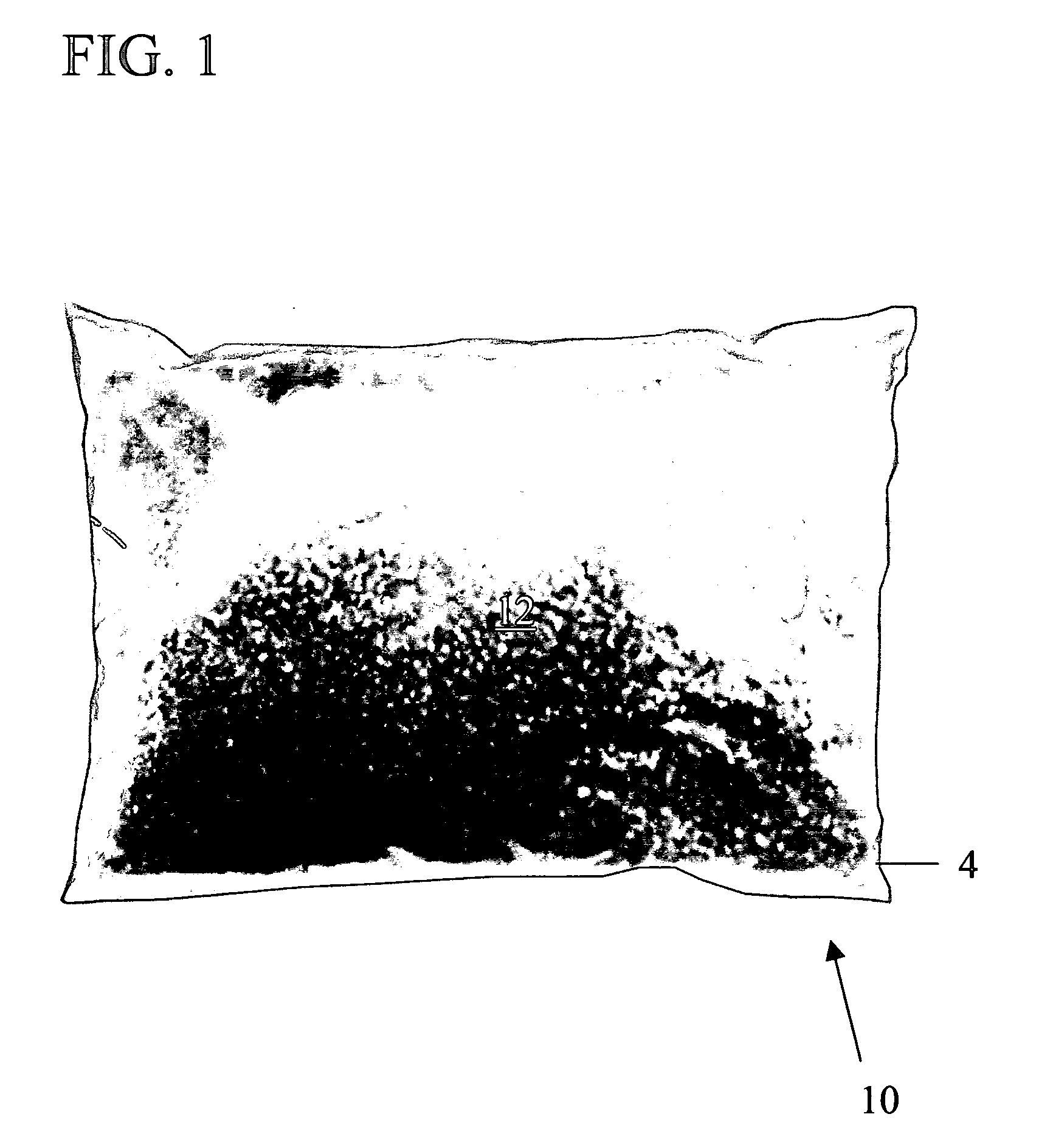Method of controlling aquatic insects
- Summary
- Abstract
- Description
- Claims
- Application Information
AI Technical Summary
Benefits of technology
Problems solved by technology
Method used
Image
Examples
example 6
[0039] A 42 gm 1.8% S-Methoprene control unit with Wettable Powder and inert (weight contributing) ingredient, designed to treat ⅛ acre (506 m2 or 5,445 square feet) for five to fifteen days was prepared using the following formulation recipe:
Ingredient% W / WWeight (lbs.)40% S-Methoprene Wettable Powder4.504.50 (2.04 kG)Diatomaceous Earth MP 7791.5091.50Polyvinyl Alcohol (PVA) Film4.004.00
Place 91.5 pounds of Eagle Pitcher Diatomaceous Earth MP-77 in an appropriately sized ribbon blender. Next, 4.5 pounds of the S-Methoprene 40% Wettable Powder was added to the mixer. The mixer was then closed, turned on and blended for 10 minutes. The wettable powder-sawdust blend was then discharged and packaged in a fiberboard drum. The blend was loaded into the hopper of an automatic polyvinyl alcohol pouch loading machine, and the machine was calibrated to load 40.5 gm of the Wettable Powder-sawdust blend in 1.7 gm polyvinyl alcohol film pouches to make 40.3 gram pouches. Once loaded, the pou...
example 7
[0040] An example of S-Methoprene tech sprayed on sawdust with no activated carbon, in a PVA pouch. A 42 gm (1.8%) S-Methoprene control unit, using S-Methoprene technical, a wood sawdust buoyant agent, and PVA envelope, designed to treat ⅛ acre (506 meter square or 5,445 square feet) for five to ten days was prepared using the following formulation recipe.
Ingredient% W / WWeight (lbs.)S-Methoprene Technical 95%1.91.9 (0.86 kG)White Pine Sawdust94.194.1Polyvinyl alcohol (PVA) Envelope4.04.0
Place 94.1 pounds of White Pine (less than 14 mesh) sawdust in an appropriately sized ribbon blender. Next, turn on mixer and spray 1.9 pounds of S-Methoprene Technical solution on the blending sawdust. Turn off the mixer and package in labeled fiberboard drum. Next, load blend into the hopper of an automatic PVA pouch loading machine, and calibrate the machine to load 40.3 grams of the S-Methoprene sawdust blend in 1.7 gm PVA film pouches to make 42 gm pouches. Once loaded, the pouch was sealed a...
example 8
[0041] An example of an S-Methoprene tech sprayed on sawdust with no activated carbon, in a solid matrix or block. A 42 gm (1.8%) S-Methoprene control unit, using S-Methoprene technical and a wood sawdust buoyant agent made in a molded solid block, designed to treat ⅛ acre (506 meter square or 5,445 square feet) for five to ten days was prepared using the following formulation recipe.
Ingredient% W / WWeight (lbs.)S-Methoprene Technical 95%1.91.9 (0.86 kG)White Pine Sawdust94.194.1Technical Protein Colloid4.04.0
Place 94.1 pounds of White Pine (less than 14 mesh) sawdust in an appropriately sized ribbon blender. Then turn on mixer and spray 1.9 pounds of S-Methoprene Technical solution on the blending sawdust. Next, uniformly spray a 10% solution of Technical Protein Colloid dissolved in warm water on to the blending S-Methoprene sawdust. Then discharge the blend into a compression machine to form 42 gram blocks or barbeque briquette shaped units. Dry compressed units to 1% moisture ...
PUM
 Login to View More
Login to View More Abstract
Description
Claims
Application Information
 Login to View More
Login to View More - R&D
- Intellectual Property
- Life Sciences
- Materials
- Tech Scout
- Unparalleled Data Quality
- Higher Quality Content
- 60% Fewer Hallucinations
Browse by: Latest US Patents, China's latest patents, Technical Efficacy Thesaurus, Application Domain, Technology Topic, Popular Technical Reports.
© 2025 PatSnap. All rights reserved.Legal|Privacy policy|Modern Slavery Act Transparency Statement|Sitemap|About US| Contact US: help@patsnap.com

